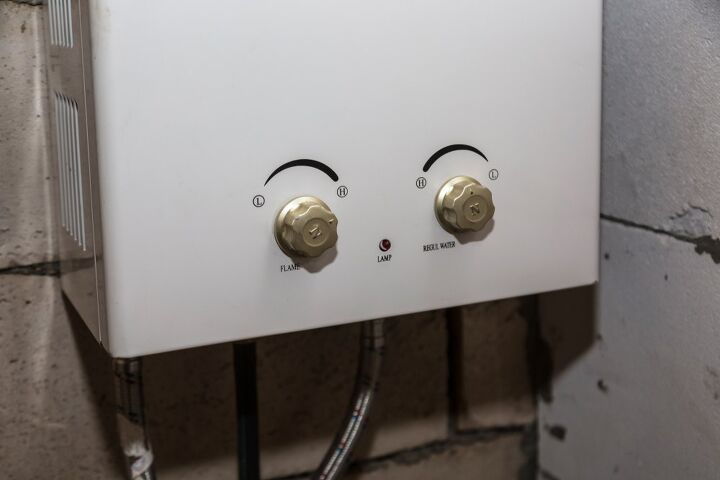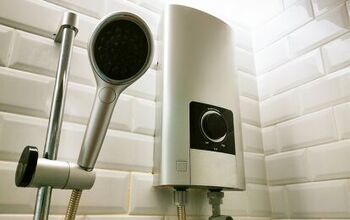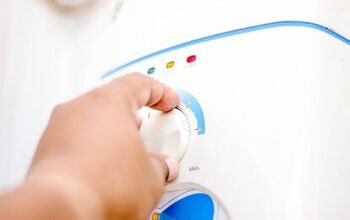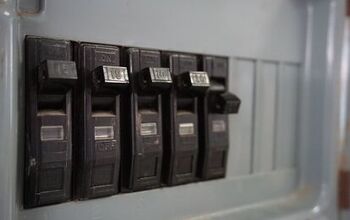What Size Gas Line For Tankless Water Heater?

Hooking up your gas lines to the water heater is very serious business, especially if you are doing this independently and not with a professional. But we understand! Professionals can be very pricey, so you might as well save a few bucks if this is something you’re confident you can do. But, first things first, what size of gas line do you need?
Tankless water heaters normally require a 3/4-inch gas supply pipe to ensure enough gas gets to the burner of the unit. In some situations, a 1/2-inch gas supply pipe is fine. But the size will depend on the BTU ratings of your water heater, as well as your other gas appliances. When in doubt, never hesitate to call a professional.
In this article, we will go in-depth on gas line sizes, how to figure out which size you need, as well as several other considerations that you need to think about before proceeding.
What Size Gas Line Will I Need for My Tankless Water Heater?
The BTU ratings of the water heater, various gas appliances, and where they have been situated on every branch from the meters and regulators will affect the size of the gas line.
The longest length technique and the branch length approach are the two ways of finding the needed pipe size.
Will a Tankless Water Heater Work on a ½-inch Gas Line?
Both yes and no. A typical household water tank gas set up is a low-pressure system, which means that gas pressure is roughly 7 in. w.c. in the residence (inches of water column). The pipework must be configured if all gas appliances are turned on so the differential pressure is less than half an inch of the water column.
This can be a stumbling block when attempting to upgrade from a traditional tank-type hot water system to a tankless water heater using preexisting pipes. Due to the sheer amount of fuel consumed, the gas pipework usually needs to be updated to accommodate the tankless water heater.
A 12-inch gas pipe may be utilized in certain circumstances. A 3.0 in. w.c. pressure drop chart was included to the 2012 National Fuel Gas Code (NFPA54. ANSI Z223.1) for specified conditions. This chart shows how to install a 200,000 BTU gas appliance on a 12-inch gas line up to 40 feet long.
Nevertheless, the following criteria must be met: The computed decreased pressure (the static pressure less the 3.0 in. pressure drop) has to be higher than the highest median gas pressure required by either of the system’s gas appliances.
To choose the correct diameter of the pipe, carefully establish the system’s natural gas supply pressure. The installation’s features will determine which ANSI Z223.1 tables to utilize.
What Happens if a Gas Line is Too Small for a Tankless Water Heater?
The capability of the meters and regulator must be more than the whole amount of all the devices in the house’s maximum BTU rating.
The heating systems will not obtain the volume of gas required for proper performance if the system’s capacity is insufficient.
How Do I Tell What Size Regulator or Meter I Have?
The capacity of each meter is measured in Cubic Feet per Hour (CFH). Find that figure regulation and multiply it by 1,024 (BTUH/CFH) to get an estimate of natural gas BTU capacity.
The volume of the meters and regulator must be more than the whole amount of all the devices in the house’s maximum BTU rating.
The heating systems will not obtain the amount of gas necessary for optimal performance if the system’s capacities are insufficient.
How Do You Measure the Gas Pressure?
A manometer is an instrument you’ll need. You can use this tool to check the pressure of gas in the system.
Manometers are devices that measure pressures in pounds per square inch or inches of water column or over a particular range.
A computerized Manometer can monitor a wider range of pressures than a traditional Manometer. For correct Manometer use, consult the manufacturer’s instructions.
What Do All These Different Gas Pressures Mean?
The pressure of the gas can be divided into two components: in inches of water column (inches of water column) (in. w.c.). or in pounds per square inch (psi).
The high-pressure side usually is determined in pounds per square inch in hybrid pressure gas systems.
The pressure is approximately two psi. Low-pressure gas pipelines, which are what supplies most appliances, are commonly measured in inches of the water column.
Where Do I Find the BTU Rating on my Appliances?
A rating plate is necessary for each device. The BTU values of the appliance and the required gas pressures for effective functioning will be listed on this plate.
For information on where to find the rating plates on each gas appliance, consult the manufacturer’s instructions.
In every manual, there is a designated area that it points out on your appliance where you can find the rating plate. Here it will have the information you need for your BTU rating.
Does a Tankless Water Heater Need a Dedicated Gas Line?
Tankless water heaters provide on-demand hot water. A gas line, sufficient combustion air, a vent to evacuate combustion gas, and an electrical outlet to operate the unit are all required for gas units.
While they stay longer than tank-style water heaters, they are much more expensive to install and require a gas line upgrade.
What Size Gas Pipe Goes into the Water Heater?
Tankless water heaters usually require a 3/4-inch water supply pipe, “a gas line to feed enough gas to the unit’s burner.
However, if the pressure is sufficient and the gas line is small enough, a 1/2 inch gas line can be utilized in some circumstances. This is the most typical size used in both the United States and Canada.
Can You Use Flex Gas Line on Water Heater?
In areas with a lot of seismic activity, a flexible gas line that can endure movement is frequently necessary.
They’re easier to engage than steel pipe, but not everybody allows them, so verify with your local contractor. However, remember that you will also need to strap the water tank to a secure surface to keep gas from leaking in the event of an earthquake.
Belts for your tankless water heater only cost about $12. This will add just a few extra precautions, so you don’t risk your health or have to pay for a brand new water heater in the event this one gets damaged.
Is Yellow Flex Gas Line Safe?
In short, as long as flexible gas lines are correctly placed, they are safe. A CSST that is not connected correctly or attached can release natural gas or combust, posing a significant fire risk.
If you aren’t sure how to handle flex gas lines, it’s best to contact a professional or maybe a friend or family member who can help you.
Things to Consider When Installing Gas Lines to Water Heater
The initial purpose of establishing pipe size for a fuel gas pipework system is to ensure that every appliance input has sufficient gas pressure.
Because most household items have the same or nearly identical minimum inlet gas pressure (about a 5-inch water column, the system regulator should be able to provide the required 3.5 in. w.c. to the required device (s).
To accomplish the following, subtract the cumulative drop in pressure in the pipe network from the primary delivery pressure to guarantee that the minimal needed level is present at the farthest appliance.
On the other hand, other systems may have different inlet pressure requirements for each device. In this case, the allowable maximum inlet pressure must be met.
Also, you can’t forget to ensure you meet the criteria for the system’s outermost appliance, which is frequently the essential appliance (in a typical residential and light market-based system).
What Are The Requirements for Gas Line Size on Water Heater?
You will need to meet several other requirements when choosing the correct size of gas line for your water heater. The following criteria are:
- Flow rate: The system’s capacity must be sized for a 100 percent flow rate.
- Minimum requirement: The minimum flow requirement must be reached.
- Pressure check: The pressure at the appliance’s inlet shall not exceed the appliance regulator’s pressure rating (not crucial for small systems with a source pressure of 12 psi (14-inch w.c./3.5 kPa) or less).
- Validate pressure intake: Any appliance with a source pressure greater than 12 psi must have its pressure at the intake validated.
The following considerations must also be considered when determining the size of piping utilized in a gas piping system:
- The amount of pressure that can be lost from the distribution point to the apparatus.
- The highest possible gas consumption.
- Piping length and number of fittings
- The gas’s specific gravity.’
- The element of variety.

Heather is a passionate writer who loves anything DIY. Growing up, she learned everything from home repairs to design, and wants to share her tips with you. When she's not writing, she's usually hiking or searching for her next DIY project.
More by Heather Robbins



























